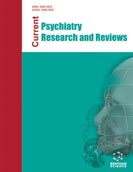Abstract
Introduction: There has long been a need for diagnostic, theragnostic, and prognostic biomarkers for psychiatric disorders. Biomarkers help in reducing ambiguity and arbitrariness and increase objectivity. In this context, many candidates for hormonal, immunological, serological, and neuroimaging markers have been proposed, but none of these marker candidates alone nor a biomarker panel has been approved for any disease. The fact that almost all psychiatric disorders are heterogeneous makes this process challenging. However, strong biomarker candidates have been identified, especially in light of the large number of clinical and preclinical studies conducted within the last five years.
Objective: The aim of this article was to compile and discuss the current information on immune biomarkers in major psychiatric disorders, such as schizophrenia, depression, bipolar disorder, and anxiety disorders.
Methods: In this study, respected scientific databases were searched using key terms related to the subject, and the related literature was examined in detail.
Results: There are many relationships between psychiatric disorders and immune system parameters. Evidence also suggests that neuroinflammation is involved in the etiopathogenesis of psychiatric disorders. Markers, such as proinflammatory cytokines, tumor necrosis factor alpha, and C-reactive protein have been associated with psychiatric disorders in numerous studies.
Conclusions: The neuroinflammation hypothesis has an important place in the etiopathogenesis of psychiatric disorders. Uncertainty remains as to whether neuroinflammation is a cause or consequence of psychiatric disorders. Some researchers have indicated that intestinal microbiota composition disorders and dysbiosis are sources of neuroinflammation. Immune marker studies are of great importance in terms of eliminating this uncertainty and overcoming diagnostic and treatment difficulties in the clinic. In this review, biomarker studies on psychiatric disorders were examined from the viewpoint of the immune system and discussed in light of the current studies.
Keywords: Biomarkers, neuroinflammation, immune system, psychiatry, diagnostic, theragnostic, prognostic.
[http://dx.doi.org/10.1016/j.tins.2015.08.001] [PMID: 26442697]
[http://dx.doi.org/10.1038/jcbfm.2012.153] [PMID: 23072749]
[http://dx.doi.org/10.1038/nature14432] [PMID: 26030524]
[http://dx.doi.org/10.1189/jlb.0212100] [PMID: 22875882]
[http://dx.doi.org/10.1111/j.1399-5618.2010.00853.x] [PMID: 20868462]
[http://dx.doi.org/10.1067/mcp.2001.113989] [PMID: 11240971]
[http://dx.doi.org/10.1097/YCO.0b013e32835a5947] [PMID: 23154643]
[http://dx.doi.org/10.1016/j.neubiorev.2016.02.011] [PMID: 26906761]
[http://dx.doi.org/10.1037/0022-3514.51.6.1173] [PMID: 3806354]
[http://dx.doi.org/10.1001/archpsyc.59.10.877] [PMID: 12365874]
[http://dx.doi.org/10.1038/npp.2011.151] [PMID: 21814182]
[http://dx.doi.org/10.1016/j.bionps.2019.100001]
[http://dx.doi.org/10.1111/pcn.12476] [PMID: 27800654]
[http://dx.doi.org/10.3390/ijms18040733] [PMID: 28358316]
[http://dx.doi.org/10.1016/j.pnpbp.2018.06.008] [PMID: 29932946]
[http://dx.doi.org/10.1016/j.biopsych.2008.11.029] [PMID: 19150053]
[http://dx.doi.org/10.1136/jnnp-2011-301779] [PMID: 22423117]
[http://dx.doi.org/10.1016/j.neuroscience.2013.04.060] [PMID: 23644052]
[http://dx.doi.org/10.1016/j.bbi.2010.10.015] [PMID: 20970492]
[http://dx.doi.org/10.1038/npp.2011.205] [PMID: 21918508]
[http://dx.doi.org/10.1007/978-981-32-9705-0_10] [PMID: 32002928]
[http://dx.doi.org/10.1073/pnas.0910658107] [PMID: 20133768]
[http://dx.doi.org/10.1126/science.1088417] [PMID: 14615545]
[http://dx.doi.org/10.1038/sj.npp.1301137] [PMID: 16823390]
[http://dx.doi.org/10.1523/JNEUROSCI.2723-06.2006] [PMID: 16988041]
[http://dx.doi.org/10.1016/j.bbi.2006.08.009] [PMID: 17070667]
[http://dx.doi.org/10.1016/j.biopsych.2009.09.033] [PMID: 20015486]
[http://dx.doi.org/10.1016/j.jad.2013.06.004] [PMID: 23870425]
[http://dx.doi.org/10.1016/j.euroneuro.2015.06.007] [PMID: 26169573]
[http://dx.doi.org/10.1038/npp.2011.132] [PMID: 21796103]
[http://dx.doi.org/10.1097/00124509-200312000-00002] [PMID: 14657769]
[http://dx.doi.org/10.1016/j.bbi.2010.10.010] [PMID: 20951793]
[http://dx.doi.org/10.3389/fpsyt.2016.00072] [PMID: 27199779]
[http://dx.doi.org/10.1016/j.psychres.2011.12.007] [PMID: 22386567]
[http://dx.doi.org/10.9758/cpn.2015.13.3.239] [PMID: 26598580]
[http://dx.doi.org/10.1503/jpn.100080] [PMID: 21138659]
[PMID: 26057314]
[http://dx.doi.org/10.3109/01913120903288579] [PMID: 19895292]
[http://dx.doi.org/10.1016/j.jad.2010.04.027] [PMID: 20537397]
[http://dx.doi.org/10.1007/s00406-010-0116-z] [PMID: 20446090]
[http://dx.doi.org/10.1016/j.jad.2014.12.010] [PMID: 25973785]
[http://dx.doi.org/10.1016/j.jpsychires.2011.11.010] [PMID: 22137759]
[http://dx.doi.org/10.1159/000339949] [PMID: 22948566]
[http://dx.doi.org/10.1016/j.jpsychires.2011.08.003] [PMID: 21889167]
[http://dx.doi.org/10.1016/j.jad.2015.10.056] [PMID: 26630394]
[http://dx.doi.org/10.1111/j.1399-5618.2007.00493.x] [PMID: 17845274]
[http://dx.doi.org/10.1016/j.jad.2005.11.015] [PMID: 16410025]
[http://dx.doi.org/10.1016/j.jpsychires.2013.08.020] [PMID: 24074516]
[http://dx.doi.org/10.1111/bdi.12214] [PMID: 24862833]
[http://dx.doi.org/10.1016/j.jad.2012.04.044] [PMID: 22749155]
[http://dx.doi.org/10.1016/j.psychres.2004.08.005] [PMID: 15661320]
[http://dx.doi.org/10.1016/j.jad.2007.02.018] [PMID: 17434599]
[http://dx.doi.org/10.1016/j.jad.2014.12.033] [PMID: 25545602]
[http://dx.doi.org/10.1371/journal.pone.0116696] [PMID: 25781172]
[http://dx.doi.org/10.1192/bjp.bp.114.150870] [PMID: 26250741]
[http://dx.doi.org/10.1159/000353613] [PMID: 24051690]
[http://dx.doi.org/10.1016/j.jad.2013.04.039] [PMID: 23684514]
[http://dx.doi.org/10.1016/j.jad.2014.05.009] [PMID: 25012430]
[http://dx.doi.org/10.1016/j.psychres.2015.05.078] [PMID: 26160203]
[http://dx.doi.org/10.1007/s00406-007-0797-0] [PMID: 18297417]
[http://dx.doi.org/10.1016/S0165-1781(96)02915-0] [PMID: 9061799]
[http://dx.doi.org/10.1002/hup.912] [PMID: 18172906]
[http://dx.doi.org/10.4414/smw.2014.13880] [PMID: 24554598]
[http://dx.doi.org/10.1176/appi.ajp.2009.09030361] [PMID: 20123911]
[http://dx.doi.org/10.1176/appi.ajp.2013.13010086] [PMID: 24129899]
[http://dx.doi.org/10.1093/schbul/sbt200] [PMID: 24379444]
[http://dx.doi.org/10.1371/journal.pone.0090407] [PMID: 24603720]
[http://dx.doi.org/10.3371/CSRP.HUMI.070516] [PMID: 27454212]
[http://dx.doi.org/10.1016/j.psychres.2013.01.019] [PMID: 23453739]
[http://dx.doi.org/10.1002/hup.2365] [PMID: 24155145]
[http://dx.doi.org/10.1016/j.schres.2010.02.1031] [PMID: 20347268]
[http://dx.doi.org/10.1016/S0920-9964(01)00275-4] [PMID: 12072172]
[http://dx.doi.org/10.1007/BF02191517] [PMID: 8399412]
[http://dx.doi.org/10.1016/j.psychres.2012.05.036] [PMID: 22766011]
[http://dx.doi.org/10.1016/j.psychres.2008.10.024] [PMID: 20067853]
[http://dx.doi.org/10.1016/j.schres.2006.02.003] [PMID: 16530388]
[http://dx.doi.org/10.1126/science.aad0314] [PMID: 26822608]
[http://dx.doi.org/10.1523/JNEUROSCI.2178-07.2007] [PMID: 17913903]
[http://dx.doi.org/10.4049/jimmunol.0903349] [PMID: 20181892]
[http://dx.doi.org/10.1016/j.jpsychires.2018.09.002] [PMID: 30212728]
[http://dx.doi.org/10.1038/s41398-017-0027-0] [PMID: 29249827]
[http://dx.doi.org/10.1001/jamapsychiatry.2014.1332] [PMID: 25133871]
[http://dx.doi.org/10.1038/mp.2016.3] [PMID: 26903267]
[http://dx.doi.org/10.1093/schbul/sbv028] [PMID: 25829375]
[http://dx.doi.org/10.1016/j.psyneuen.2018.09.005] [PMID: 30243054]
[http://dx.doi.org/10.1038/tp.2013.27] [PMID: 23612048]
[http://dx.doi.org/10.1016/j.ynstr.2016.02.003] [PMID: 27830164]
[http://dx.doi.org/10.1016/j.jad.2017.08.082] [PMID: 28886500]
[http://dx.doi.org/10.1017/S0033291712000554] [PMID: 22716910]
[http://dx.doi.org/10.1016/j.neulet.2017.07.021] [PMID: 28716529]
[http://dx.doi.org/10.1016/j.bbi.2017.01.021] [PMID: 28161475]
[http://dx.doi.org/10.9758/cpn.2016.14.3.231] [PMID: 27489376]
[http://dx.doi.org/10.30773/pi.2019.08.09] [PMID: 31587531]













